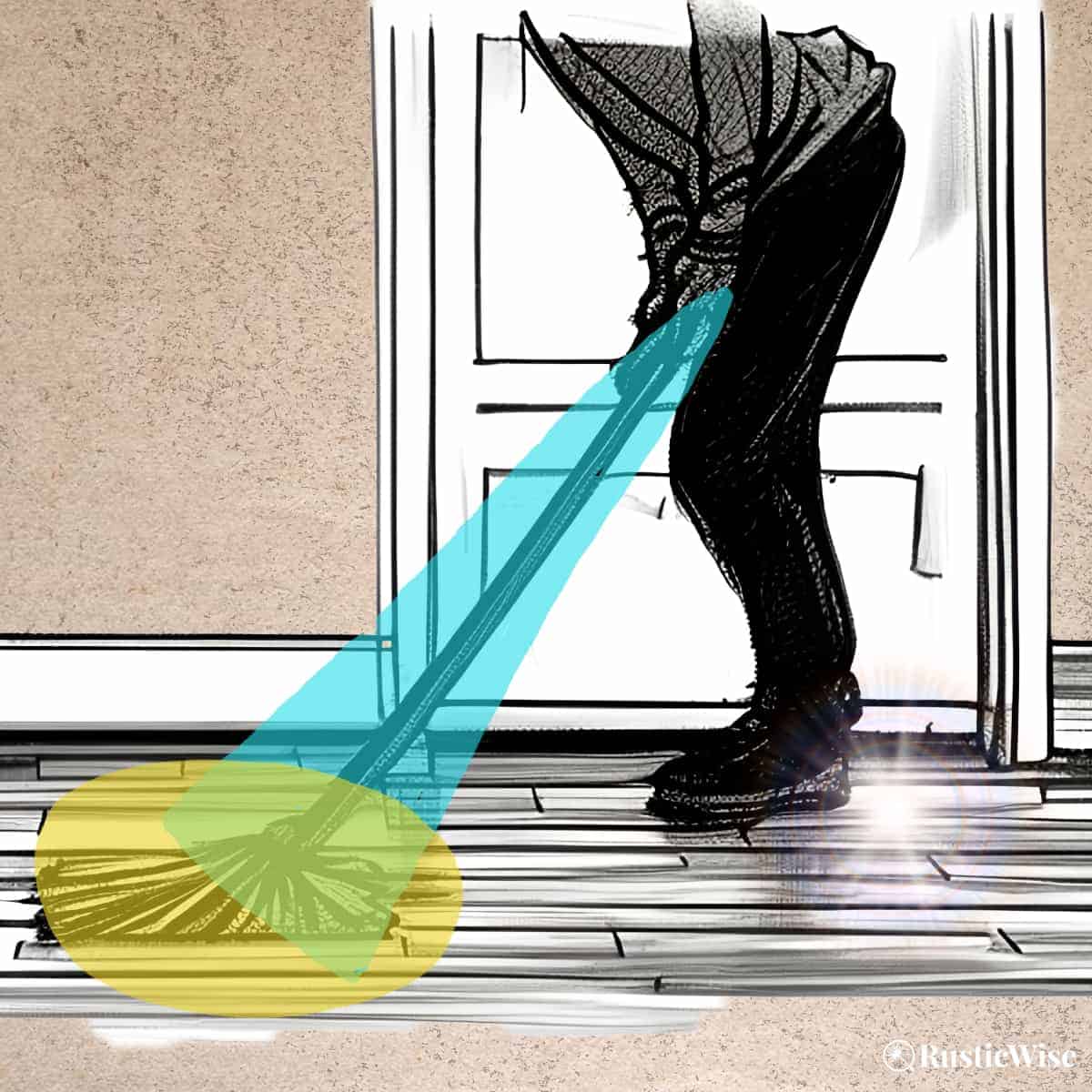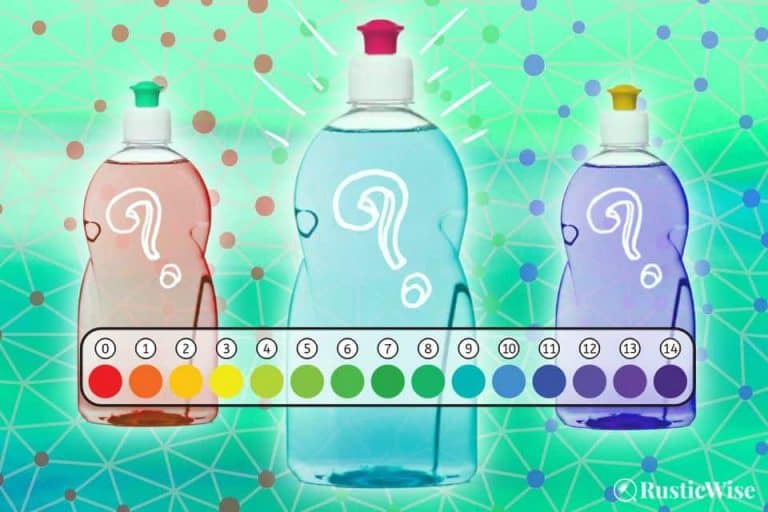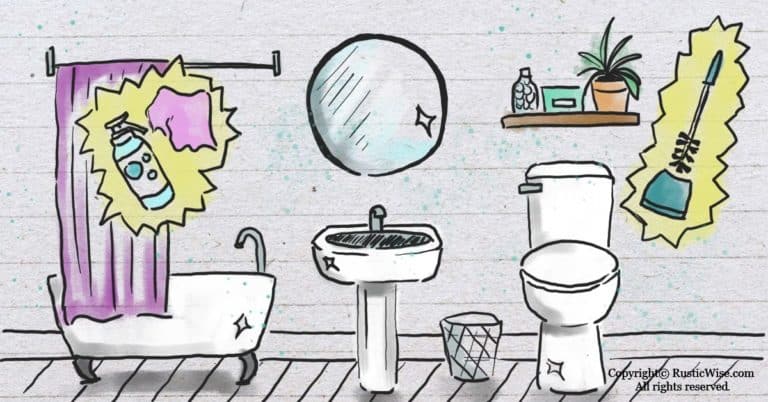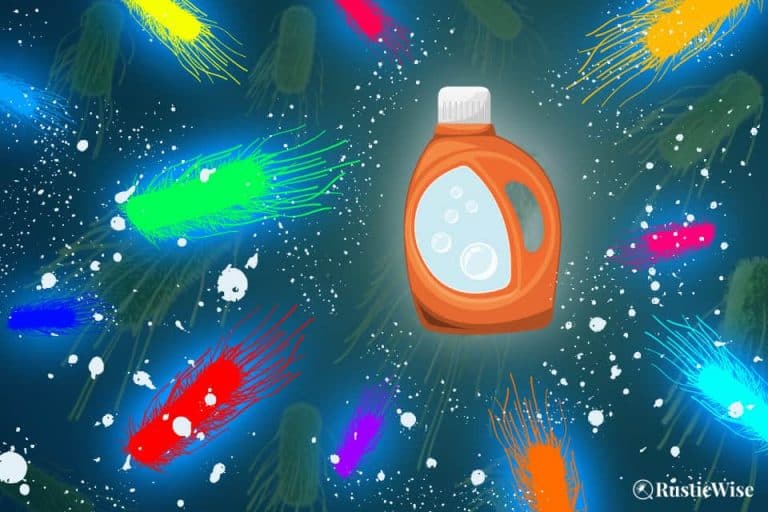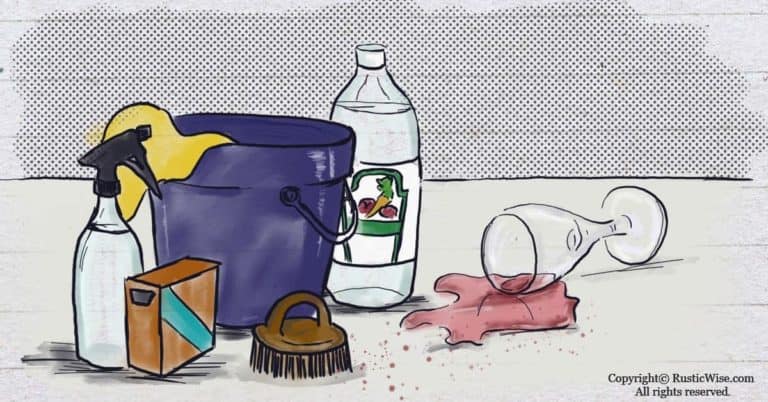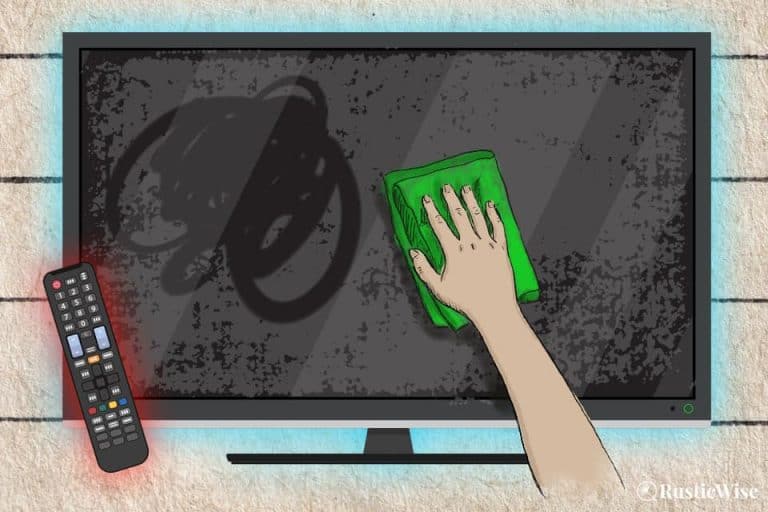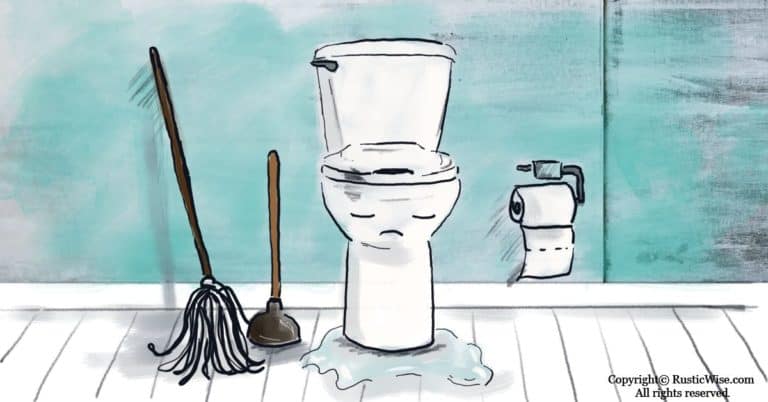Best Way To Clean LVP Flooring (Luxury Vinyl Plank)
Luxury vinyl flooring, commonly known as LVP, is a resilient material that can withstand the rigors of day-to-day life. LVP flooring is a popular choice for high-traffic areas such as kitchens, family rooms and laundry rooms, because it’s water resistant and comes in many styles. But it’s not immune to wear and tear.
So, what’s the best way to clean LVP flooring? A daily sweep or vacuum keeps dirt and debris from scratching the surface. A weekly wet mop with plain water, or a mild detergent can keep floors looking its best. Avoid using abrasive tools, or harsh cleaning products, or those labelled as “mop and shine.”
How you clean LVP can be the difference between a floor that looks great for years, or one that looks old and dingy. If you have stains, scuffs, or scratches, I’ll show you how to get rid of them. Keep reading for tips on how to clean and care for LVP flooring and keep it looking its best.
What exactly is LVP (luxury vinyl plank) flooring?
Luxury vinyl planks, also known as luxury vinyl tile (LVT), are a popular flooring option for those looking to get more bang-for-their-buck. This flooring can closely resemble wood floors, complete with textured and beveled surfaces. These flooring options are more affordable than traditional hardwood floors, but more high-end than regular vinyl or linoleum flooring.
LVP is made of polyvinyl chloride resins, also known as PVC. The PVC is combined with other materials, including calcium carbonate and UV stabilizers (to prevent fading) to create a resilient material.¹
Luxury vinyl floors come in individual planks, or square tiles which can be easily installed, or sometimes grouted.
LVP comprises several layers:
- Back layer: Adds thickness and comfort (more comfortable than traditional tiles). It also makes it more resistant to mold, mildew, and moisture.
- Core layer and image layer: Using 3D-imaging, a photo of a natural material is transferred onto each tile to achieve a realistic look.
- Top protective layer: Depending on the quality of the plank, this wear layer varies in thickness and often is topped with urethane. This is the layer that helps resist against scratches, scuffs, and stains.
LVT is a very durable material that can last up to 25 years, with proper care.
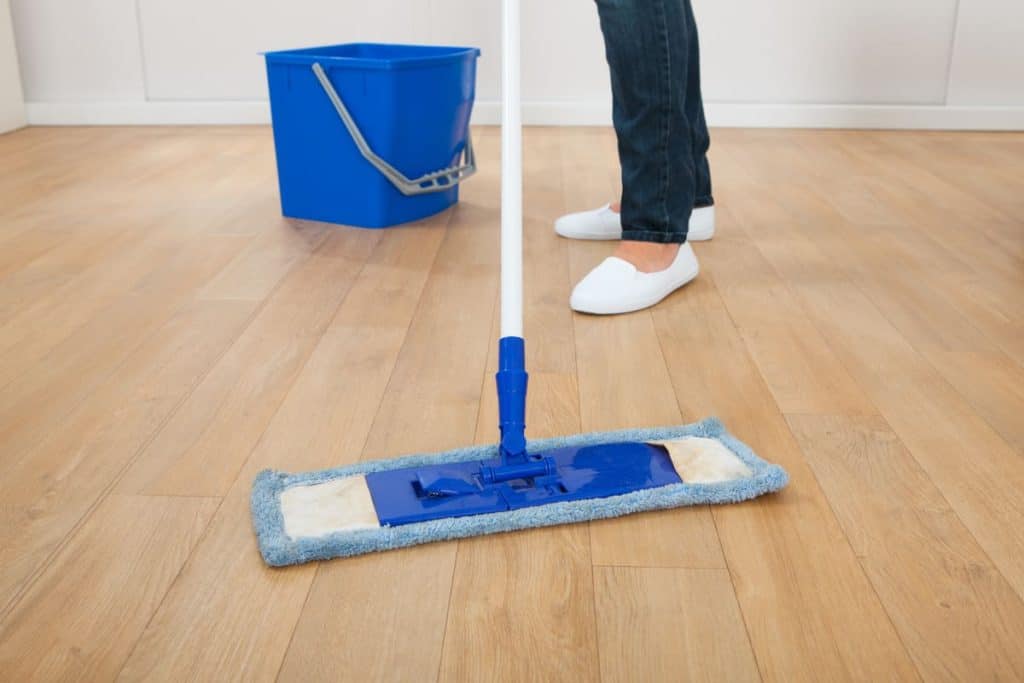
Supplies you’ll need to clean vinyl plank flooring
So what do you need to keep your floors sparkling clean? Luckily, you don’t need much for regular cleaning.
Let’s gather a few supplies, most of which you’ll likely already have at home.
Regular cleaning
- Broom or vacuum to remove dirt and debris
Weekly cleaning
- Microfiber mop
- Large bucket
- Water
- White vinegar (some people like to use apple cider vinegar, but this is pricier)
- Optional: A few drops of essential oil such as lemon, orange, tea tree, or lavender, which have antibacterial properties and add a nice scent.
Alternatively, you could also use a squirt of dish soap (such as Dawn for handwashing dishes) in a large bucket of water. You would need to wet mop with plain water after this treatment to remove any soapy residue.
Note: You can also choose to use a commercial floor cleaner if you have one handy. Make sure it’s NOT a “mop and shine” product which can leave a residue and dull the protective layer on your vinyl floor. Most “no-rinse” cleaners will work fine.
Spot treatments
- Baking soda and water paste/scrub
- Soft nylon brush
- Optional: rubbing alcohol, mineral spirits, or nail polish remover (depending on the stain)
Scuff marks or scratches
- Jojoba oil OR WD-40
- Soft cloth
The best way to clean LVP flooring: regular maintenance
Vinyl plank flooring can be a beautiful material to add to your home. It has the look of hardwood at a fraction of the cost. However, you’ll want to clean the floor regularly to keep it looking nice and new as well as to prevent any buildup of dust or grime.
If the idea of regular cleaning sounds like advice your mother would give you, well, your mother is right.
Routine vacuuming or sweeping keeps the dust bunnies away. It also prevents debris from scratching the protective top layer. For many people, a daily sweep (or vacuum) is necessary (especially if you have young kids, or pets at home!). For others, every two or three days may suffice.
If you’re using a vacuum, make sure you use an attachment WITHOUT a beater bar as this may scratch your top coat.²
And, if you’re diligent about sweeping or vacuuming, your weekly cleaning routine with a damp microfiber mop with plain water should do it.
After you vacuum, you can use a damp mop to wipe your vinyl plank flooring. This will help you clean up any spills and dust. It’s best to do this at least once a week, but twice a week if you have a lot of foot traffic in your home.
It also goes without saying that wiping up spills immediately will prevent unsightly stains, and sticky buildup on your floors.
Tip: Avoid getting excess water into the joints between the planks, as this can cause the wood to swell and crack, damaging the floor.
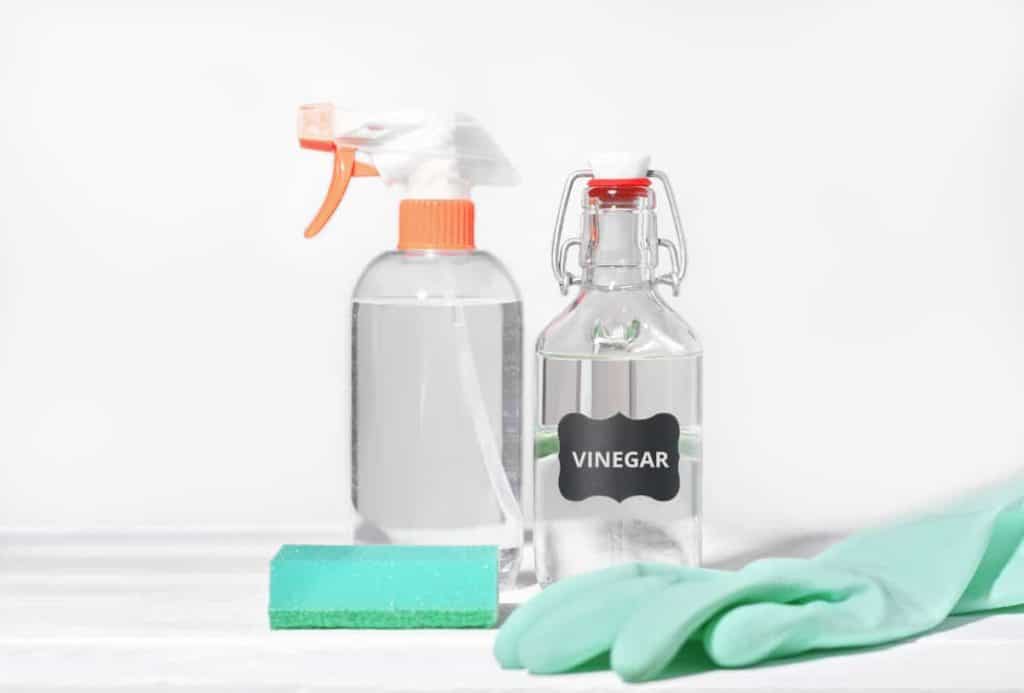
How to clean luxury vinyl tile with vinegar and water
If your floors are feeling grimy, you can boost your cleaning power with white vinegar. While many people suggest using apple cider vinegar (ACV) to clean your floors, this is a pricier option. (I prefer to save my ACV for DIY beauty purposes, such as an apple cider hair rinse).
While the smell of ACV is more pleasant than regular vinegar, rest assured that the potent odor of any type of vinegar quickly dissipates.
What makes plain white vinegar a good cleaner? Most bottles of vinegar you pick up at the grocery store contain around 5 percent acetic acid. This acidic cleaner helps to cut through grease, remove sticky residue, lift dirt, and gently disinfects at the same time.
Using vinegar is an effective, inexpensive, and eco-friendly way to clean your vinyl plank flooring. Be sure to dilute it with water though to ensure it doesn’t damage the floor.
Make a vinegar solution:
- 1 cup white distilled vinegar
- 1 gallon of warm water
- Optional: Add 10 drops of an essential oil of your choice such as lavender, lemon, orange, or tea tree oil for scent and to boost cleaning power
- Before mopping, it’s important to first sweep or vacuum to remove dirt and debris.
- In a large bucket, combine white vinegar with warm water.
- Using a soft microfiber mop, dip the mop head into the vinegar solution. Squeeze out excess water.
- Work in small sections along the grain of the flooring. Start in one inner corner of the room and work your way outwards.
- Continue steps 3 and 4 until the entire floor is clean. You may need to change your vinegar solution if it’s dirty.
- Allow the floor to air dry. Or, to speed things up, you can follow up by wiping down the floors with a dry cleaning cloth.
There’s no need to rinse this vinegar solution when you’re done.
Other ways to clean luxury vinyl plank flooring
Besides using vinegar, you can also use a mild detergent such as dish soap and warm water. Add only a small squirt of dish soap with 1 gallon of warm water in a bucket. You may need to follow up with a quick wipe using plain water to remove any soapy residue. Let air dry.
Or, you could use a commercial pH neutral floor cleaner. Follow the instructions on the bottle for proper dilution. Then follow the directions above to keep your vinyl floors sparkling clean. Most “no-rinse” formulas should work fine.
How to remove stains on LVP floors
Stubborn stains on floors are a common problem. Fortunately, there are several methods you can use to clean your LVP flooring and remove tough spots.
A soft nylon brush can give you a bit of abrasive power without damaging your floor.
Tip: Before using any kind of stain remover, test it out on an out-of-the-way area on the flooring first.
- Food stains, or sticky buildup: Make a baking soda paste by combining equal parts water and baking soda in a small bowl. Apply to the problem area with a soft nylon brush. Gently scrub to remove. Rinse clean with water, and wipe dry with a microfiber cloth.
- Cosmetic smudges or lipstick: A bit of rubbing alcohol should do the trick. Apply rubbing alcohol onto a soft cloth and scrub to remove the stain.
- Crayons, paints, and markers: If your young’uns made a mess after an art project, don’t fret. A bit of mineral spirits (aka mineral turpentine) applied onto a soft cloth should do the trick. You can find mineral spirits at most local hardware stores.
- Nail polish: A bit of acetone or nail polish remover should remove the colorful stain. Test on an inconspicuous area first for signs of discoloration!
How to remove scratches and scuff marks on vinyl plank flooring
Your vinyl planks are looking worse for wear, and you want to restore them to their former glory. Here’s a handy guide on how to fix scratches and scuffs on vinyl plank flooring.
Cleaning is the first step to fixing scratches and scuffs on vinyl plank flooring. The easiest way to do this is to use something like a microfiber cloth and cleaner to wipe down the floor and get rid of the dirt and dust along the scratch or scuff mark. Always make sure your floor is clean and dry before applying any compound.
To remove scratches or scuff marks, all you’ll need is either jojoba oil or WD-40. You’ll also need a soft cloth. I prefer jojoba oil as it’s all-natural, and doesn’t need to be cleaned off.
Apply a bit of jojoba oil (or WD-40) onto the scratches using a soft cloth. Buff to shine. If using WD-40, use a vinegar and water solution (equal parts) to clean and remove residue.
How often do you need to clean LVP flooring?
You should also do a daily (or every other day) sweep or vacuum.
Wet mop to clean your flooring at least once a week to avoid dirt, dust, and other particles from building up. You can occasionally use either a vinegar solution, a dish soap solution, or a commercial cleaning product.
Cleaning tips for LVP floors
Learn the best way to clean LVP flooring and keep it looking good as new for years to come with a few simple do’s and don’ts.
Do’s
- Regularly sweep or vacuum floors.
- Protect heavy-traffic areas with a natural rug (without a rubber backing). Rubber backed mats may damage floors.
- Use furniture protectors on the legs of sofas, tables, and other heavy furnishings.
- Avoid walking across floors with spiky high heel shoes as they may dent floors.
- Wipe up spills ASAP to prevent stains and sticky residue.
- Use door mats or area rugs to protect high-traffic areas.
Don’ts
- Avoid dragging heavy objects across the floor—this may scratch or remove the protective coating.
- Avoid certain harsh abrasive cleaning tools and products. Avoid “mop and shine” cleaners as these may leave a residue and dull the finish of your floors.
- Avoid using too much water when mopping, or letting excess water sit on floors. Water may get between the cracks and travel to the subflooring. This may lead to mold or mildew issues, or warping of the surface.
- Don’t leave wet rugs on the flooring for long periods of time.
Related questions
Do you need to wax LVP flooring?
No, unlike wooden flooring, you don’t need to wax your luxury vinyl tiles. The protective top coating contains a polyurethane finish which protects it from normal wear and tear. Any cleaning solutions that contain solvents or waxes can actually damage the topcoat, leaving it looking dull or cloudy.
What’s the difference between LVP and laminate flooring?
While these two types of flooring often mimic the look of wood floors, there are key differences. Luxury vinyl plank (or tile) floors are mainly comprised of plastic resins. This makes it more water-resistant than laminate. Laminate flooring is made from high-density fiberboard core which makes it less water resistant.
👉 If you like this post, see other Timeless Cleaning Tips You Need To Know. 🌟
Would you like more timeless tips via email?
Fun tips to help you live an independent, self-sustaining lifestyle. Opt-out at any time.


References
- Diverse Flooring, What is vinyl plank flooring made of?, https://www.diverseflooring.ca/blog/articles/What-is-vinyl-plank-flooring-made-of. Accessed February 2023.
- World Floor Covering Association, Resilient Vinyl Flooring, https://wfca.org/page/vinyl-flooring. Accessed February 2023.

Author: Theresa Tesolin
Theresa is co-founder of RusticWise. She helps people unleash their inner DIY spirit by encouraging them to get dirty and make or grow something from scratch.

